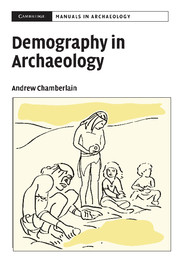Book contents
2 - DEMOGRAPHIC CONCEPTS, THEORY AND METHODS
Published online by Cambridge University Press: 02 December 2009
Summary
POPULATION STRUCTURE
Age categories and age distributions
The age structure of a population refers to the distribution of numbers of individuals according to their instantaneous age at the time when the population is censused. Age structures can be recorded either for living populations or for a sample of deaths from a living population. It is important to note that the age-at-death structure of a mortality sample will generally differ from the age structure of the living population within which the deaths occur. In most populations the risk of death varies significantly with age and this results in proportionately greater numbers of deaths in the higher-risk age categories.
Although population and mortality profiles can be treated as continuous distributions of ages, the curves of survivorship and mortality contain multiple inflections and therefore they require the determination of several parameters in order to describe them as continuous mathematical functions (see Section 2.3 below). It is a long-standing demographic convention to aggregate age distributions into discrete age intervals, which in the case of humans are usually measured in units of months, years or multiples of years since birth. For example, in human historical demography age distributions are often determined by summating the number of individuals within five-year or ten-year age classes (Figure 2.1). In fact, five-year age categories may represent too fine a subdivision for some historical datasets in which inaccuracies in age recording are evident from the patterns of ‘age heaping’ (see Section 3.1.1. below).
- Type
- Chapter
- Information
- Demography in Archaeology , pp. 15 - 44Publisher: Cambridge University PressPrint publication year: 2006

